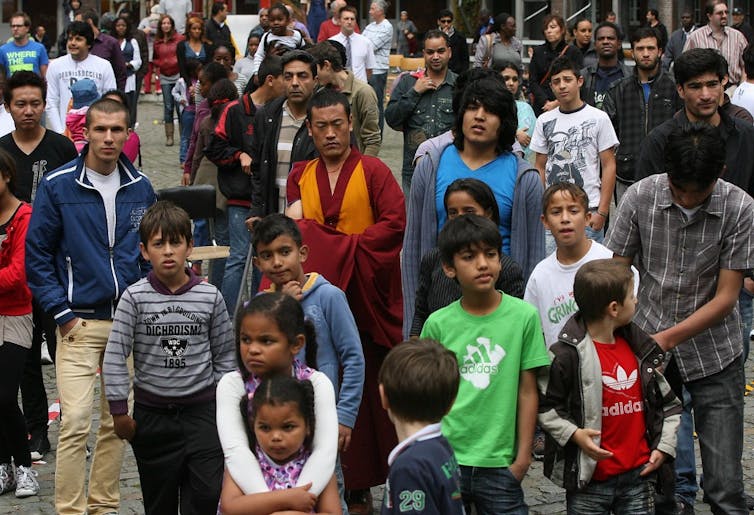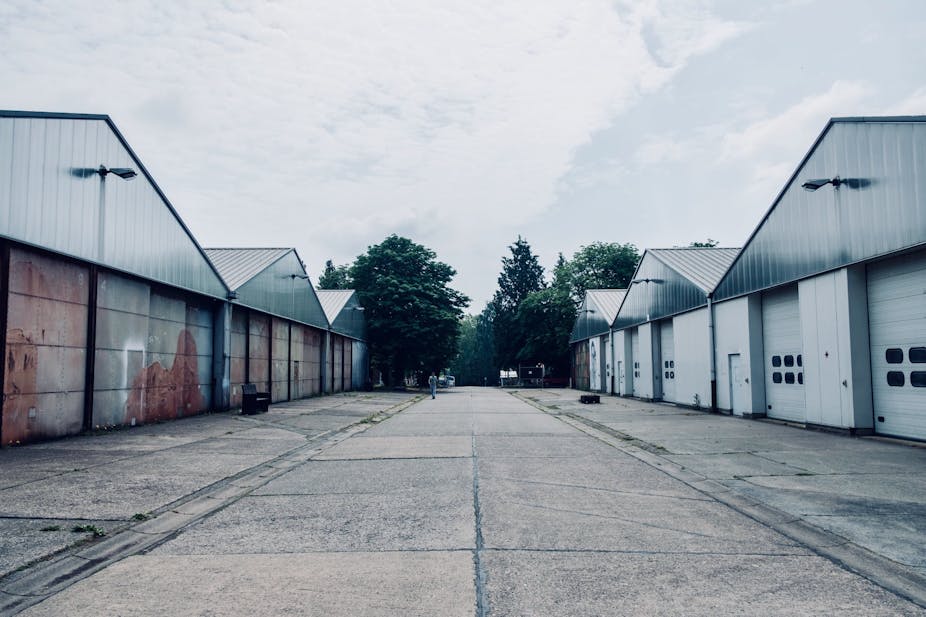When we discuss of refugee issues or migration, media and scholars often focus on the motives that lie beneath such migrations and its relationship with the harsh debate taking place throughout Europe today.
Some focus on the conditions under which migrants and asylum seekers are received in European countries, but only rarely are refugees’ and migrants’ words taken into account, their opinion or feelings about the reception system in Europe, its structure and its procedures.
Citizen initiatives have played a major role
Similar to those of other European countries, Belgium’s asylum system entered into crisis in 2015 under the pressure of an rising demands for international protection. The asylum system and its reception structures were seriously unprepared, despite the fact that the number of new applications was lower than that in the late 1990s and early 2000s (52,689 in 2014-2015, 78,470 in 1999/2000), and that such increase was predictable since asylum trends have followed a cyclic pattern over the last 20 years.
Decisions made by the Belgian government and the federal agency FEDASIL in the attempt to face the crisis went toward the simplification and generalisation of selection procedures, and the setting up of collective reception centres.
Citizens’ initiatives emerged as main support for migrants who arrived over the long summer of 2015. These initiatives often replaced institutions in answering the migrants’ basic needs, hosting asylum seekers, distributing food or clothing and providing administrative and legal support. Mobilised citizens also went beyond the material dimension, and opened spaces for the migrants to regain the personal identity they had been forcibly denied throughout their journey, or had lost in the tangles of depersonalising administrative procedures.
“It took me a while to start doing normal things”
Throughout our field research, it emerged that while structures and procedures set up in a state of emergency brought to the dehumanisation of migrants, a process of rehumanisation has occurred in the relationship between them and mobilised citizens. As B. remarked:
“The journey doesn’t end here. You arrive at the station, then you go to the police office. By bus to the centre. I’ve arrived, it was raining, a cold freezing night. […] It took me a while to start doing normal things, thinking normal things. You become a number. […] The people who come here from outside, I have many friends. I became a normal person again, thanks to them. I play football, we go out together, to the cinema. It’s important, it’s important you know. I made friends here.”
Almost all the asylum seekers and de facto refugees who participated to our study highlighted the arbitrary nature and inherent injustice of the asylum system. Their personal background, including the compelling reasons and tragic circumstances that pushed them to leave their homes, crumbled under the weight of the selection procedure.
The interview at the Commissioner General for Refugees and Stateless Persons (CGVS/RA), responsible for the in-depth examination of asylum applications, is the main practice through which migrants are stripped of their personal identity. Said A., who was living in the Namur reception centre in May 2018 after two years and one negative decision from the CGVS/RA.
“There is you, with your story, the journey, the family behind. It doesn’t matter, they don’t care. They ask you questions, other questions. They want to trip you out, keep asking the same question again and again, until you get confused. [Then] they will say you are fake refugee, and you get a negative, no matter what you have gone through before getting there.”
The standard procedure provides that applicants for international protection who have been denied the refugee status or subsidiary protection can lodge an appeal with the Council of State. If decision remains unchanged, an order to leave the territory is issued. Applications, interviews, appeals and the whole procedure can take years.

Living in a frozen time and space
Temporality is key in the feelings and frustrations of migrants. As we have remarked in our interviews, most feel the time has frozen. The reception centres represent the concrete spatial dimension that shapes this sense of being stucked: a perception of immobility, uncertainty and powerlessness.
Temporality is central to the way asylum seekers experience the process of selection as dehumanising and arbitrary. A long wait is suddenly interrupted by short moments in which procedures reactivate and migrants are suddenly required to be proactive. Again, the interview at CGVS/RA is the element around which the negative feelings of our interviewees revolve:
“What do they want? You wait for months and one day you get called by the commissariat. Before, you’ve been thinking about it every day, but then you want to start living a normal life. […] One day you get called, and you gotta go there and answer their questions. They ask questions like a machine gun. […] They want you to get back on your dossier, but you’re tired. You’re tired.”
After long time waiting in collective structures, migrants may end up looking with fear at life outside. Even when they gain their status, they have lost familiarity with interpersonal contacts, daily chores and life matters. Disorientation is even more intense for those who reside in structures far away from urban centres:
“Do you imagine living here for one year? It’s in the middle of fields here, it takes hours to get to the city, no bus on weekend. […] After a while you get used to this life, and you feel like you don’t need anything else. But this is not life, this is not normal. I saw people going crazy when they had to leave. […] They were happy, of course, but also scared. They didn’t know what they were getting into.”
“Looking at each other like the fish at the market”
Selection practices are another important source of frustration. The principle of selection, after all, is pivotal in the way contemporary democracies aim to manage global migration flows, and is central in the migration debate since the 1950s.
What characterises the refugee question, and the 2015 reception crisis in particular, is the extreme simplification and generalisation of criteria. In 2015, the European Commission reopened debate on the creation of a list of “safe countries of origin” for asylum seekers. Belgium followed in 2016. S., a Senegalese man waiting for first decision, showed us all his disappointment and frustration toward the system and the selection criteria adopted by CGVS/RA. According to him, the asylum procedure would have a disruptive effect on the interpersonal relationships in the reception centre:
“We end up looking at each other like the fish at the market, you know. Those who are good, those who are bad. The only thing that counts is where you are from […] if they say your country is safe you can forget about it. […] You see people coming and going here, but you know some will stay ages [in the reception centre], and some will never be accepted. […] It’s unfair, it’s wrong sometimes. I saw poor people, people in need who deserved it, getting rejected, and then bad people getting in. You don’t look at people for what they are, you become jealous, you start hating others.”
Our interviewees expressed fears for not being considered as individuals whose rights must be guaranteed under any specific circumstance. Rather, they only felt categorised between those who are “at risk” or those who are “safe”, those who are “legitimate” and those who are “illegitimate”.

“They did not give a shit that I was tortured”
Institutions in charge of selection focus on the analysis and permanent verification of the authenticity of the personal profiles of applicants. A translator hired to assist asylum seekers during interviews at CGVS/RA, remarked that much effort is put to verify that the applicant comes from the region or city from which he/she claims to be coming.
According to our source, however, the staff hired during the reception crisis received only superficial training and was largely unprepared about the different geographical and cultural origins of asylum seekers. Often, the analysis and verification of profiles are thus perceived by applicants as a search for inconsistent elements in their discourse, rather than in accurate collection and analysis of their background and motivations to claim asylum:
“They keep asking me that question again and again. I go forward, they ask more questions, then they go back to that silly question again. […] What colour was the uniform of prison guards when you were locked up in there?[…] I was tortured! They did not give a shit that I was tortured, they just wanted me to get confused. You can’t say I don’t remember.”
The inefficiency of the state of emergency
We are convinced that what we heard from the migrants who took part to our study is mainly caused by the state of emergency in which the Belgian federal government, as well as the whole European Union, had to operate during and after the summer of 2015.
We keep asking ourselves whether this state of emergency is functional to the anti-immigration approach of many governments, and the trends toward strict selection of migration that fascinate political leaders today.
In the beginning of 2018, Belgium’s federal government sought to reduce the reception network, only to reverse course when migrations resumed in the summer period. With ill-concealed criticism toward the government’s policy, FEDASIL director Jean-Pierre Luxen defined the increase in demands as “sadly predictable” in the foreword of the FEDASIL 2018 annual report.
In this scenario, what we can suggest as researchers (and as human beings, citizens and taxpayers) is to opt for well-planned alternative forms of reception based on local small(er)-scale solutions, with the aim to promote interpersonal contact with citizens and to foster the future integration of asylum seekers in our societies.


